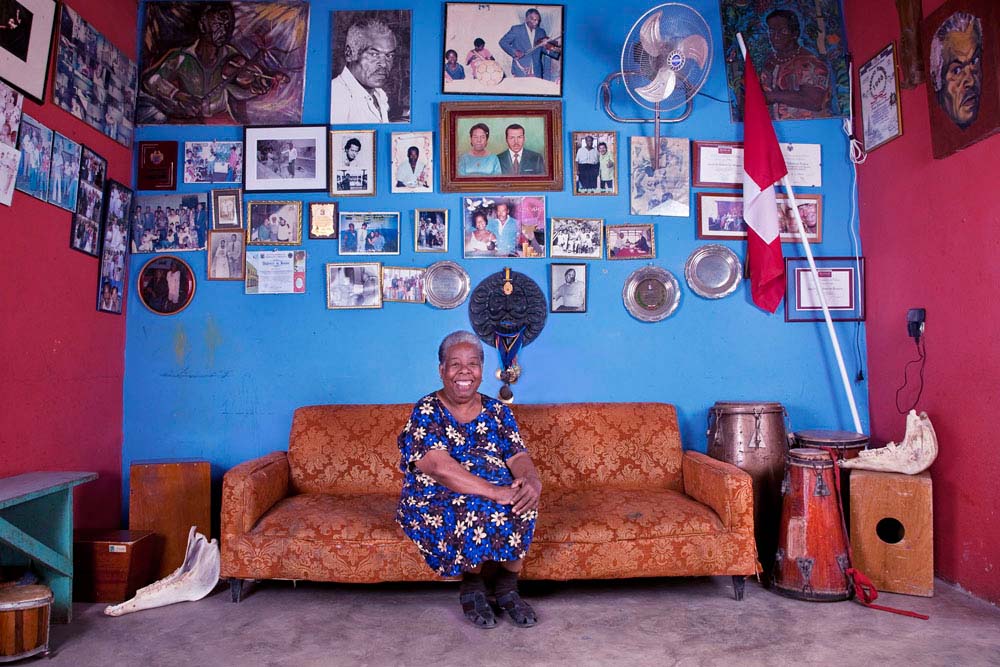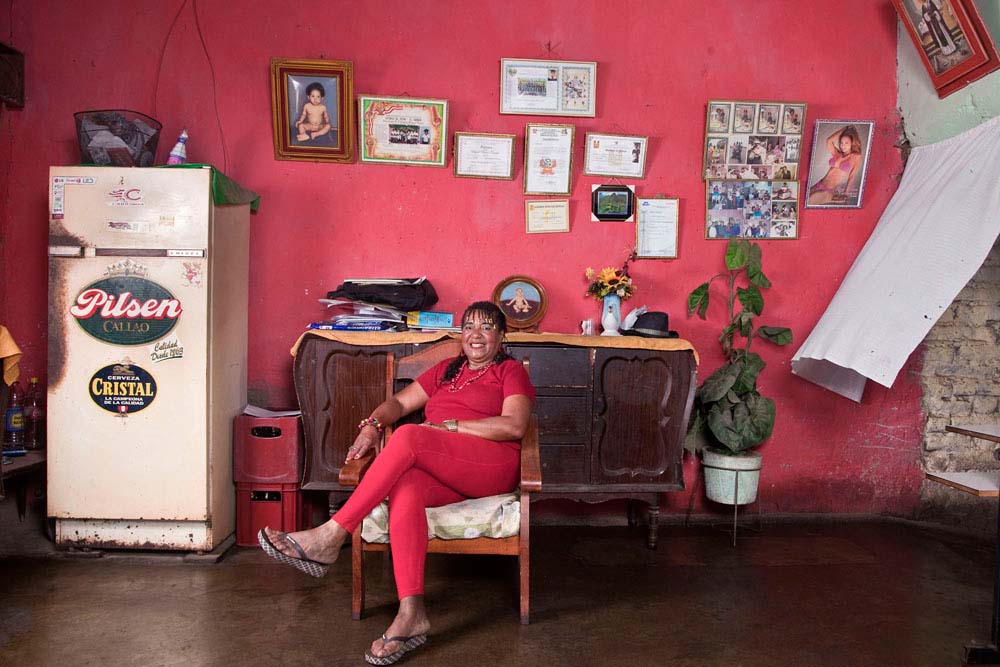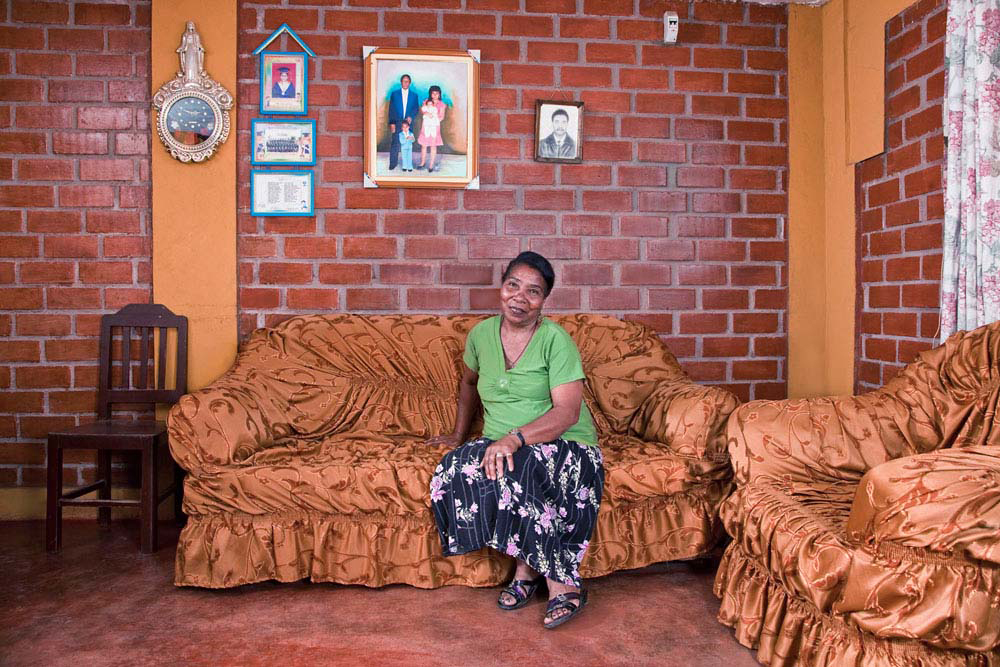











CURATOR'S CHOICE: Artist's Statement
First Place: Angie Keller
The Gladioli of El Carmen
The Afro-Peruvian women of El Carmen, a coastal town in Peru, inspired my project, “The Gladioli of El Carmen”. I found these women and their contributions to familial and cultural life were rendered invisible. The longer I lived with them, the more they recognized their own strength.
These women are in process of building their own personal landscape with character and determination. I attempt to correct these marginalization by deliberately seating them in the center of the frame. I am determined to make these women more visible because they are the center of their home and this community.

CURATOR'S CHOICE: Artist's Statement
Second Place: Judy Gelles
Fourth Grade
For the past seven years I have photographed and interviewed over 300 fourth graders from around the world asking them what they wish for and what they worry about.

CURATOR'S CHOICE: Artist's Statement
Third Place: Jennifer Little
100 Years Of Dust: Owens Lake and the Los Angeles Aqueduct
This project documents the Los Angeles Department of Water and Power’s legally mandated dust mitigation program at Owens Dry Lake in California's Eastern Sierra Nevada Mountains. It is the latest chapter in a century of legal battles over water rights and air quality in Owens Valley. The dust mitigation program has cost $1.3 billion to date and requires so much water that it may not be sustainable as climate change results in a drier climate for California, which experienced the worst drought in recorded history in 2014-2015.

CURATOR'S CHOICE: Juror's Statement
Jeff Rosenheim
Curator in Charge, Department of Photographs, The Metropolitan Museum of Art
Artists accepted the necessary consequences of exposing themselves and their work in public and submitted over 3,500 photographs to this year’s CENTER Awards in the “Curator’s Choice” category. I had the great pleasure of looking at them all. It was a life affirming process from start to finish. Not because every picture maker convinced me that they were the true inheritor of the pictorial tradition of Daguerre, Fox Talbot, and Brady; or a worthy descendant of Nadar, Sander, and Arbus; or an expander of the experimental graphic practices of Moholy-Nagy and Man Ray; or an able disciple of the poignant social realism seen in the work of Hine or Lange. Some applied their understanding of these historical models, others carefully avoided them. A few were blissfully unaware of anything but their desire to add a new image to a world already brimming full of them. Collectively, the CENTER’s applicants prove once again that the medium of photography, both analog and digital, is alive and well and a corrective to those who might believe otherwise.
I have chosen Angie Keller for the first prize for her series of portraits of Afro-Peruvian women at ease in their homes in El Carmen, a small city south of Lima in coastal Peru. As she has written, “These women are in process of building their own personal landscape with character and determination. I attempt to correct these marginalizations by deliberately seating them in the center of the frame.” How right she was. The honesty and generosity of Keller and her camera work skillfully illuminate the homes and lives of the sitters, descendants of African slaves brought to Peru beginning in the 16th century and as late as 1850. The photographs reveal how much we can learn from these strong women and the artist who made them come to life and rendered them visible for us all.
The second prize winner, Judy Gelles, has traveled even further to find her subjects, fourth-grade students in schools across the world from India and Italy to South Korea and the United States. The portraits are remarkably well seen, minimal in their use of props, and a salutary celebration of things as they are. In each, Gelles asked the kids “what they wish for and what they worry about.” The clarity of the project is beguiling.
Jennifer Little, the third prize winner, has focused on landscape, not portraiture. Her documentary project examines Owens Lake, a dry alkali flat located 200 miles northeast of Los Angeles. According to Little, its dust has become the largest source of carcinogenic particulate air pollution in North America, the mitigation of which has cost the nation $1.3 billion to date. The photographs show a scarred, post-apocalyptic world that is seemingly endless. Her project reminds us that one of the essential roles of the camera is to show us, as T.S. Eliot wrote in The Waste Land, “fear in a handful of dust.”
To these three awardees, and to all those not on this very short list, I thank you on behalf of the CENTER for believing that seeing is a personal and creative act, and photography the perfect medium to explore our differences.
Jeff L. Rosenheim
March 2016


